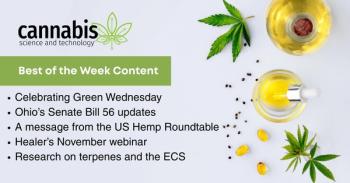
Noid Factoid from Episode 17
Listen to a Noid Factoid from Adie Rae, Assistant Scientist at Legacy Research Institute.
On this month’s Noid Knowledge podcast episode, we are joined by Adie Rae, Assistant Scientist at the Legacy Research Institute. We discuss Adie’s background, her knowledge and research surrounding cannabis aroma, how the industry’s laser focus on THC percentage is decreasing the value of cannabis for patients, and more. Below, Dr. Rae shares a quick Noid Factoid with us!
Transcription: "Hi my name is Adie Rae and I am a Translational Neuroscientist at Legacy Research Institute in Portland, Oregon. My Noid Factoid is that the CB1 receptor is the most ubiquitously expressed receptor of its kind in the entire nervous system. That means, of the little cousin of receptors that belongs to, this guy is everywhere."
Read a preview of Dr. Rae explaining the data collection process for “The Nose Knows: Aroma, but Not THC Mediates the Subjective Effects of Smoked and Vaporized Cannabis Flower," which was recently published in the journal Psychoactives:
"In 2017, I was invited to give a keynote lecture at a cannabis competition in Portland, Oregon, called the Cultivation Classic. After doing this cup for several years, we had this huge database of anonymous information about the subjective effects of cannabis in healthy people. And so that's when a cannabis cup turned over to become a research project. I basically sent the entire data set to a colleague of mine, Shaban Demirel, who's also one of the authors on the study. Shaban was not affiliated with the cup at all. He had no involvement in the data collection or the tools used to collect it. So, I handed it over to him and said, 'hey Shaban, what do you see here?'
It wasn't a funded project. For the cup itself there are corporate sponsors who made the events happen and it was a huge community effort. Fro example, this brand contributes a couple of grand and this brand is a platinum sponsor and they sweep in with eight or ten grand. It was all literally pieced together through corporate sponsorships and donations, essentially. And a lot of volunteer hours. So, the way that this data came into the world was truly a collective effort. It was not some big, highly funded research project. It's kind of a miracle that it ever actually came to life."
Listen to the full episode to hear the rest of the story and more:
Newsletter
Unlock the latest breakthroughs in cannabis science—subscribe now to get expert insights, research, and industry updates delivered to your inbox.




